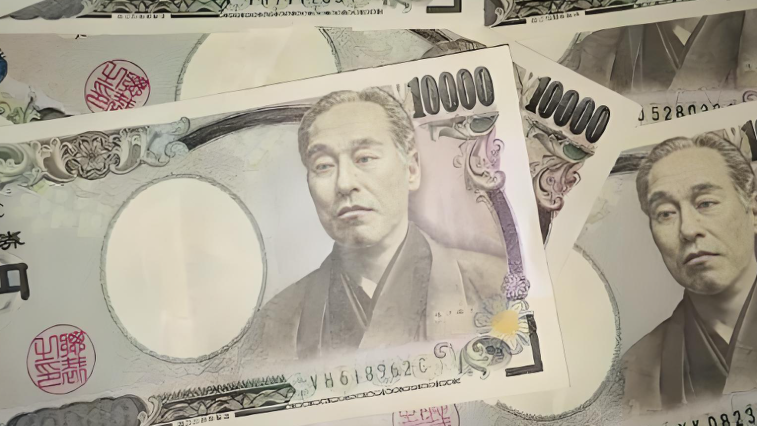Dollar/Yen Edges Lower
Advertisements
Recent statistics have unveiled a notable shift in the economic landscape of the United States, particularly in January, where the Composite Purchasing Managers' Index (PMI) registered at 52.4, a significant drop from the preceding month’s 55.4. This decline aligns the index with levels last seen in the second quarter of 2024, contradicting anticipations that the economy would rally following a boost in confidence after November. Delving deeper into sector-specific figures reveals that the Service PMI plummeted to 52.8, marking its lowest position since April, compared to a prior value of 56.8. The waning future confidence within the service sector, which reached a one and a half year peak in December 2022, does not detract from the fact that it remains the second-highest level observed over the past year. Moreover, the service sector has demonstrated a robust growth trajectory in employment, with jobs surging at the fastest pace seen in the last 30 months.
On the manufacturing side, the PMI reported a slight recovery, achieving a value of 50.1, surpassing market forecasts of 49.7, and reflecting a minor improvement from December’s 49.4. These findings collectively indicate that while the manufacturing sector is showing signs of life, underlying pressures persist. The report revealed that both the aggregate input costs and the average selling prices in January rose at the quickest rate in four months, a trend that many businesses attribute to price hikes imposed by suppliers and wage increases stemming from labor shortages. This escalation in costs is noticeable across both goods and service domains, and if left unchecked, it could lead to intensified concerns regarding the Federal Reserve's potential pivot towards a more hawkish stance in its monetary policy.
These concerns are underscored by factors including vigorous economic growth, an expanding job market, and rising inflation—all of which may compel the central bank to adopt a more aggressive approach. Indeed, the possibility of tightening measures looms large, particularly if these inflationary trends persist, prompting discussions amongst economists about the likely impacts on consumer purchasing power and overall economic stability.
Furthermore, last Friday offered insight from Kazuo Ueda during a press conference, where he indicated that if expected economic conditions materialize, the Bank of Japan (BoJ) may continue to raise interest rates. He noted that the global financial markets appeared stabilized, cautioning that fluctuations in exchange rates could play a more significant role in influencing prices compared to previous patterns. Concerning the path of interest rate hikes, Ueda stressed that the pace will be dictated by economic and inflation trends without preconceptions regarding the speed. Stability in the global financial landscape is a hopeful sign ahead of the upcoming spring wage negotiations, wherein he anticipates positive outcomes.

Earlier, Ueda had emphasized that the current interest rate levels in Japan remain exceptionally low, despite the broader neutral rate range suggesting a lag behind neutral levels. There were also indications from the Bank of Japan's analysis report projecting that the neutral interest rate could fall between nominal rates of 1% to 2.5%, highlighting a need for careful consideration regarding the handling of Exchange Traded Fund (ETF) holdings in the central bank's balance sheet. The BoJ's careful approach signifies a broader understanding of the delicate balance needed when managing market expectations and economic realities.
Looking internationally, upcoming data releases are on the radar, including the IFO Business Climate Index for Germany in January, the corrected monthly rate of building permits in the U.S. for December, and the annualized total of new home sales in December after adjustments.
On the commodities front, gold has recently been at the forefront of market attention, recording a steady movement upwards last Friday, reaching a 12-week high near the $2757 mark. This rise in gold's value is chiefly attributed to the ongoing weakness of the U.S. dollar index, influenced by expectations of a Federal Reserve rate cut in March and delays in tariff implementations in the U.S. The prevailing uncertainty surrounding trade tariffs has also escalated risk aversion, subsequently bolstering gold as a safe-haven asset. Market participants are currently eyeing resistance around $2780, with strong support situated near $2740.
In parallel, the dollar-yen exchange pair displayed a consolidative trend last Friday, resulting in a minor daily decline, with the price hovering around 156.00. The weakening of the dollar index considerably pressured the dollar-yen rate, as multiple factors combine to create downward momentum for the U.S. dollar against the yen. This adjustment follows the Bank of Japan's recent decision to raise interest rates by 25 basis points, which has enhanced yen's allure and placed further pressure on the dollar-yen exchange rate amidst Ueda's optimistic statements about Japan's economic outlook.
As the market observes these fluctuations, today’s trading could see critical attention directed towards the resistance point near 157.00. A breakthrough beyond this key level could potentially unlock further upward momentum, while a drop below 155.00 would evoke heightened concerns about additional downward risks and prompt a fresh wave of market recalibration.
Finally, the dollar against the Canadian dollar witnessed oscillations last Friday, culminating in a slight daily depreciation, with current transactions near the 1.4390 mark. Factors contributing to this downward trend include profit taking and technical selling pressure arising from the proximity of the 1.4400 threshold. Furthermore, the anticipation of a diminished impact from forthcoming tariffs and cooling rate cut expectations from the Fed have also played a significant role in reinforcing this trajectory. Today, investors will be keeping an eye on the resistance near 1.4500, with critical support resting around 1.4300.
Leave a comment
Your email address will not be published